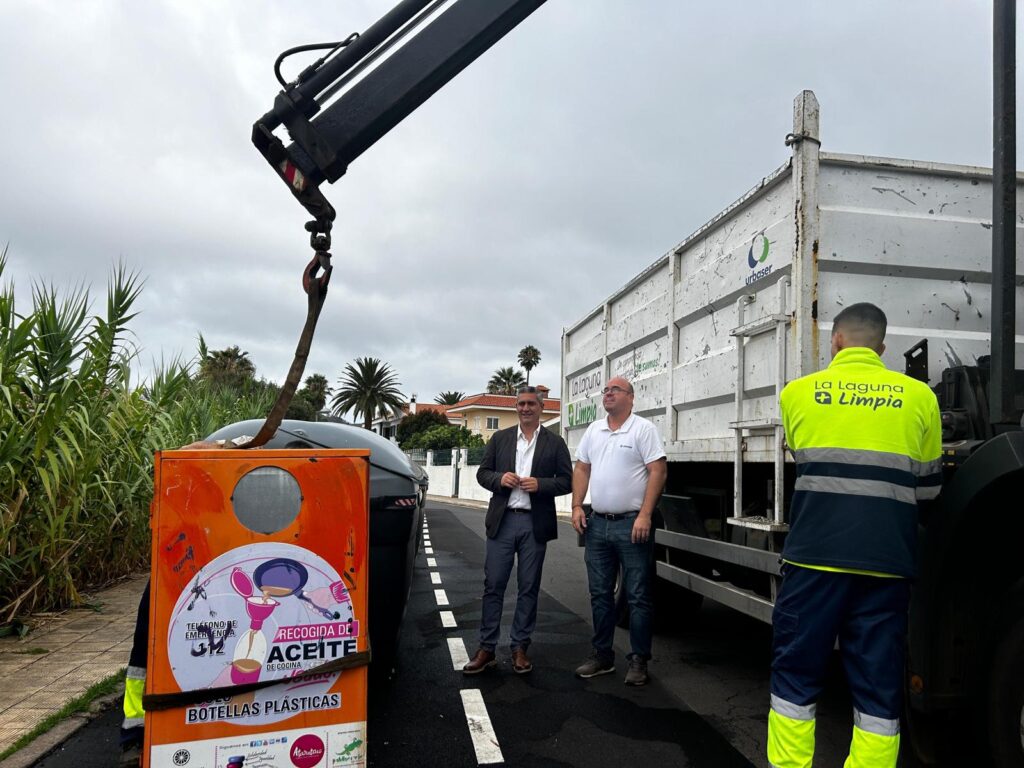
For the third consecutive day, a layer of fog, a result of the meteorological mishmash, fell yesterday in the early morning hours over Los Rodeos, in La Laguna, causing a new chaos in the air activity of the Tenerife North.
The low visibility, combined with light drizzles, caused a backlog in the arrivals of flights from other locations throughout the morning. The adverse weather conditions forced several planes to circle the airspace of the northern part of the island for at least an hour, resulting in the cancellation of up to 31 flights (13 inter-island arrivals and 18 departures) and the diversion of two others, one from Seville to Tenerife Sur Airport and another departing from Gran Canaria which had to return to its original location.
It all started on Wednesday at 8:00 p.m. when the mist began to blind the airport in La Laguna. A total of 16 flights had to be diverted to the other airport on the island, Tenerife Sur, 14 of them from the designated hour, as reported by official sources from Spanish Airports and Air Navigation (AENA). The weather improved on Thursday morning, but dense fog returned from 7:00 p.m. onwards. From then until 10:45 p.m. –three hours and 45 minutes– the airport remained inoperative. The chaotic day resulted in a total of 33 affected flights: 11 cancellations (four to Gran Canaria, two to El Hierro and Madrid, and one each to Lanzarote, La Gomera, and La Palma), as well as 17 diversions, most to Tenerife Sur: three flights from Madrid, La Palma, and Gran Canaria, and one each from Santiago, Malaga, Barcelona, Bilbao, Vigo, Lanzarote, Fuerteventura, and El Hierro. There were also five delays of over two hours.
The lack of visibility in this location –situated 600 metres above sea level– has been caused by the abrupt change in weather that the Archipelago has experienced, which, however, has impacted differently on the various sides of the Islands. While in the south and east, a layer of Saharan air laden with dust has raised temperatures above 30 degrees –and even close to 40 in some areas–; in the north, a strong trade wind flow has brought significant cloudiness, dense fog, and even light precipitation.
This is due, in turn, to the “pressure” exerted by the Saharan layer on the cool and humid trade wind. The clash of air masses occurs at over 600 metres, which is the height of Los Rodeos, so it is common for this to happen. In fact, the airport is equipped with the most advanced technology to allow pilots to land and take off despite adverse conditions.
In the south of Tenerife and Gran Canaria, heat continued to dominate the day. Thus, on its third hot day, the thermometers in San Bartolomé de Tirajana, specifically at Las Tirajanas station, exceeded 40 degrees, becoming the oven of Canarias. It was followed, in the same municipality, by the Cuevas del Pinar station with 36.1 degrees. In Tejeda, temperatures reached 35.9 degrees and in Agüímes 35.6 degrees. In Tenerife, the highest temperatures were recorded, once again, in the capital with 31.6 degrees in Santa Cruz; and at the summit, with 31.1 degrees in Las Cañadas del Teide.
Five Municipalities at Risk
[–>
The heat is expected to gradually decrease, improving visibility at the Northern airport. However, it is not expected to disappear completely and threatens to continue dominating the weekend. Such is the situation that the State Meteorological Agency (Aemet) maintains yellow alerts for high temperatures in the south of Tenerife and the inland and south of Gran Canaria until at least Sunday. Meanwhile, the Health Department has extended health risk warnings due to high temperatures. In total, five municipalities will remain at risk due to the heat.
In Gran Canaria, the Health Department has activated the red warning (the highest level) until July 16 in Santa Lucía de Tirajana and San Bartolomé de Tirajana and until July 15 in Tejeda. In Tenerife, an orange warning is in place from the 13th to the 15th of July in Vilaflor.
Vulnerability to high temperatures includes personal risk factors such as being over 65, infants, pregnant women, etc.; environmental factors, local (homeless individuals, athletes, especially hikers) and work-related among others. Recommendations for vulnerable populations include staying in cool, shaded, or air-conditioned places as much as possible, cooling off as needed, reducing physical activity, avoiding outdoor sports during midday hours, and drinking water or liquids regularly, even when not thirsty and regardless of physical activity being carried out.
In this regard, the Health Department also recommends avoiding caffeinated, alcoholic, or very sugary drinks as they can lead to dehydration. Finally, special attention is advised for babies, minors, pregnant or breastfeeding women, as well as older individuals or those with conditions that may worsen with heat (such as heart diseases, kidney diseases, diabetes, hypertension, obesity, cancer, mobility issues, dementia, and other mental illnesses, as well as substance abuse).
















